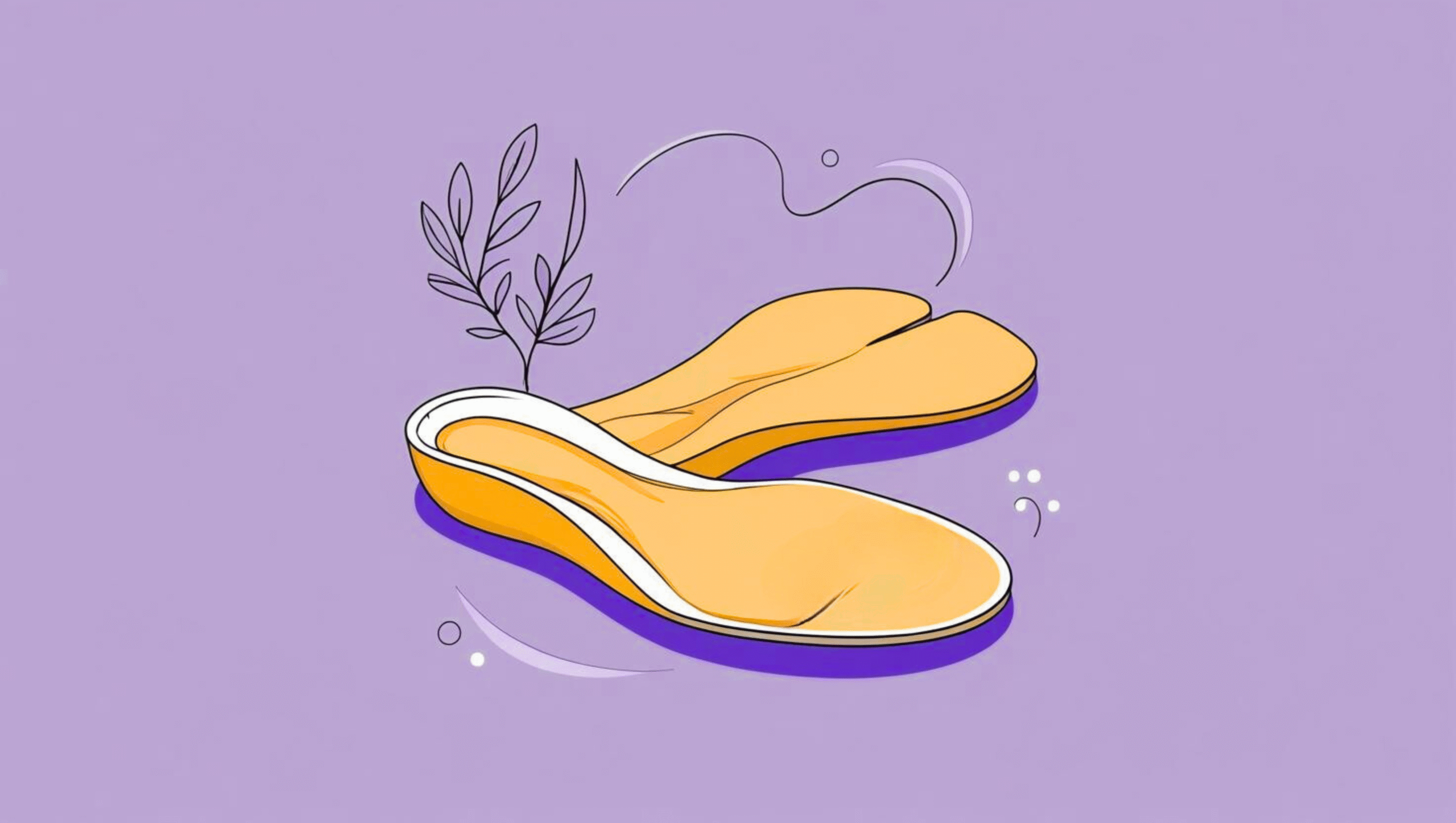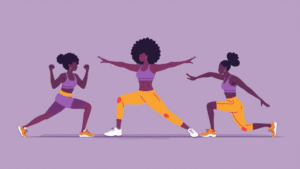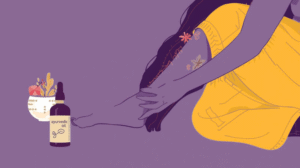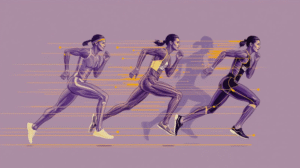You roll out of bed prepared to tackle the day, but that initial step out of bed brings an instant jolt of pain through your heel. Or perhaps, after a long day of standing, it’s like your feet are supporting the weight of the world. Ring a bell? Foot pain doesn’t just ruin your day; it silently saps your energy, alters your walk, and exhausts you. Gradually, what at first could be a mild annoyance can start getting in the way of your everyday activities and mobility in the future.
If you are on your feet all day at work, walking miles, or just coping with the stiffness of age, foot pain is a pain you don’t have to learn to live with. The good news is that most of the usual culprits behind foot pain can be prevented or treated with good support. You can take concrete steps toward healthier movement, whatever your ag,e with a little understanding about what is going on down there and how insoles work.
Why Does Foot Pain Become More Common with Age?
Your feet have traveled far. By the time you’re in your 40s or 50s, they’ve walked, stood, and been ignored every now and then for years and decades. It’s little wonder that pain in the feet is an all-too-common companion with the passing of time. But why, and what is the role of insoles in alleviating this pain?
Aging and Structural Changes in the Feet
Over time, the 26 bones, 33 joints, and over 100 muscles, tendons, and ligaments in your feet begin to shift. Tendons lose their flexibility. Arches lose support. Feet become wider. This loss of structure changes the pressure distribution along the foot, often leading to pain even with minimal movement [1]. This imbalance over time also affects your walk and overall stability.
Reduced Fat Padding and Joint Wear
The natural fat pads on the soles thin out over time, especially under the heel and forefoot. Less cushioning means more impact from each step. Combine that with years of cartilage wear and tear, and you’re dealing with chronic discomfort from arthritis and general joint stress [2].
How Lifestyle and Occupation Contribute
Jobs that require standing, such as teaching, nursing, or retail work, can break down the feet more quickly. So can using the wrong footwear. High heels, flat sandals, and poorly supporting sneakers all put extra stress on the foot, particularly when used for decades.
What Are the Common Causes of Foot Pain?
Plantar Fasciitis and Heel Spurs
Among the most frequent complaints in the foot, plantar fasciitis is swelling of the band of tissue (plantar fascia) stretching from the heel to the toes. It produces a stinging pain in the heel, particularly upon arising in the morning [3]. Many times, heel spurs, bony growths that occur due to repeated stress, are present in this condition.
Flat Feet and Overpronation
Flat feet do not have a normal arch, resulting in the rolling of the foot inward (overpronation). Such misalignment disrupts balance and puts additional strain on the ankles, knees, and hips, raising the likelihood of injury [4].
Arthritis and Joint Degeneration
Arthritis, particularly osteoarthritis and rheumatoid arthritis, erodes cartilage in the joints of the foot. It causes swelling, stiffness, and reduced mobility. Seniors complain of increased pain during weather changes or after prolonged use [5]. Footwear with joint support will go a long way to alleviate pain.
Diabetic Neuropathy and Circulatory Issues
For diabetics, circulatory problems and nerve damage (neuropathy) can lead to numbness, pain, and tingling of the feet. Ulcers and infection can develop if correct foot care and footware are not maintained [6].
Bunions, Corns, and Calluses
Pressure and friction over time cause deformities such as bunions, or skin irritation such as corns and calluses. These are usually the result of poorly fitting shoes and may progress without proper cushioning and support [7].
How Do Insoles Alleviate Foot Pain?
Correcting Foot Alignment and Pressure Distribution
Excellent insoles promote natural alignment and stabilize the foot. They evenly redistribute body load, eradicating aching high-pressure areas and calluses.
Arch Support for Flat Feet
Rigid arch support lifts fallen arches, curtailing overpronation and enhancing alignment throughout the kinetic chain,from feet to knees via hips [8].
Cushioning Impact for Heel Pain
Insoles with heel cups and gel cushioning diminish shock to the heel, particularly for individuals with plantar fasciitis or heel spurs. Cushioning provides more recovery and less day-to-day strain on the foot [9].
Enhancing Balance and Posture
By bracing the foot structure, insoles enhance your posture. Improved balance decreases falling, particularly among the elderly, and translates into increased mobility.
Reducing Load on Ankles, Knees, and Back
Foot alignment influences the whole body. Right insoles correct the posture and fan out the stress, so it does not propagate to other joints higher in the body. This has been proven in studies to alleviate pain in knees, hips, and lower back in foot imbalance cases [10].
How Should You Choose Insoles Based on Age and Condition?
Insoles for Adults in Their 30s and 40s
At this age group, individuals tend to experience foot pain due to stress caused by long hours of standing, exercise, or ill-fitting footwear. For day-to-day wear, use insoles with moderate arch support, sensitive cushioning, and airy materials. Gel or foam insoles can alleviate shock from daily movement and prevent the strain from occurring in the future.
Insoles for Seniors with Chronic Pain
Seniors require insoles with additional cushioning, rigid arch and heel support, and diabetic comfort materials where needed. Deep heel cups provide gait security, and additional metatarsal support reduces pressure at the ball of the foot. Memory foam layers or orthopedic-level designs can offer consistent relief and prevent falls in mature consumers.
Off-the-Shelf vs. Custom Orthotics
Off-the-shelf insoles may be suitable for minor problems and everyday convenience. Podiatrist custom orthotics offer customized support for conditions such as extreme flat feet, arthritis, or diabetic neuropathy [11]. Proper fit can make a world of difference in your gait, being able to stand and walk, and alleviating pain from standing on your feet for extended periods.
When to See a Podiatrist or Physiotherapist
If pain continues after switching insoles or footwear, seek a specialist. They can check for biomechanics, prescribe orthotics, and create a healing plan specific to your body and lifestyle. Don’t wait until the pain is chronic. Early assessment avoids permanent damage.
Betterhood’s Perspective: Why Proactive Aging Starts from the Ground Up
Why Foot Health Is Foundational to Mobility and Longevity
Mobility is freedom, and it starts at your feet. Chronic foot pain can cause people to avoid walking, leading to muscle loss, weight gain, and reduced cardiovascular fitness. Betterhood believes foot health is not just a comfort issue. It is a longevity issue. Supporting your feet today protects your ability to move, explore, and stay independent tomorrow.
The Role of Insoles in Preventive Physiotherapy
Insoles are more than an afterthought. Carefully chosen, they are daily micro-corrects to your pressure and posture preventing problems before they begin. They’re wear therapy for your lower body. Preventive care is not always dramatic, sweeping gestures. Sometimes it is the unobtrusive support beneath your soles.
What Are the Final Thoughts on Foot Pain and Holistic Aging?
Squeezing insoles into your routine is a minor adjustment, but with life-altering outcomes. From aches and pains to energy gains, they keep you going for longer. Stabilizing your body now means staying spry and adventurous for many years to come.
Just like brushing your teeth or stretching your back, the foot care also has to be regular. Inspect your shoes. Flip your insoles. Stretch your feet. And respond to pains early. Don’t turn tiny aches into huge ones. A few minutes daily for your feet can translate to years of pain-free, confident mobility.
Frequently Asked Questions:
1. Can insoles really relieve chronic foot pain?
Yes. Clinical trials show that orthotic insoles significantly reduce pain related to plantar fasciitis, flat feet, and arthritis by improving alignment and shock absorption [12].
2. Can wearing the wrong footwear lead to foot pain later in life?
Definitely. Poor footwear accelerates joint wear, deforms natural gait, and contributes to chronic foot problems, especially if worn over long periods.
3. How often should insoles be replaced for optimal support?
Most last 6-12 months depending on usage. Replace them when cushioning flattens or they feel less supportive.
4. Is foot pain preventable through early intervention with insoles?
In many cases, yes. Addressing biomechanical issues early can prevent the development of chronic pain or joint stress later in life.
References:
[1] Menz, H., “Age-related changes in foot structure and function,” Journal of Geriatric Physical Therapy. https://journals.lww.com/jgpt/Abstract/2005/28020/Age_Related_Changes_in_Foot_Structure_and.3.aspx
[2] Miller, T., “The Aging Foot: Loss of Fat Pad and Arthritis,” Mayo Clinic Proceedings. https://www.mayoclinicproceedings.org/article/S0025-6196(20)30705-2/fulltext
[3] Mayo Clinic Staff, “Plantar Fasciitis – Symptoms and Causes,” Mayo Clinic. https://www.mayoclinic.org/diseases-conditions/plantar-fasciitis/symptoms-causes/syc-20354846
[4] NIH, “Flat Feet,” National Institute of Arthritis and Musculoskeletal and Skin Diseases. https://www.niams.nih.gov/health-topics/flat-feet
[5] Hunter, D., “Osteoarthritis in the Foot and Ankle,” Arthritis Care & Research. https://onlinelibrary.wiley.com/doi/full/10.1002/acr.22036
[6] American Diabetes Association, “Foot Complications,” ADA Guidelines. https://diabetes.org/healthy-living/medication-treatments/foot-care
[7] APMA, “Footwear and Foot Disorders,” American Podiatric Medical Association. https://www.apma.org/Patients/FootHealth.cfm?ItemNumber=985
[8] Thomas, M. et al., “Effectiveness of Arch Supports for Flat Feet,” Foot and Ankle Clinics. https://www.sciencedirect.com/science/article/abs/pii/S1083751519300377
[9] Chen, Y., “Insole Cushioning and Heel Pain Relief,” Gait & Posture. https://www.sciencedirect.com/science/article/abs/pii/S0966636221000025
[10] Li, K. et al., “Association Between Foot Orthoses and Low Back Pain,” Clinical Biomechanics. https://www.sciencedirect.com/science/article/abs/pii/S0268003320300207
[11] Scherer, P., “The Value of Custom Orthotics,” Journal of the American Podiatric Medical Association. https://japmaonline.org/view/journals/apms/96/1/0960068.xml
[12] Smith, G., “Foot Orthotics in Pain Management,” Journal of Rehabilitation Research. https://www.rehab.research.va.gov/jour/03/40/2/pdf/smith.pdf



















